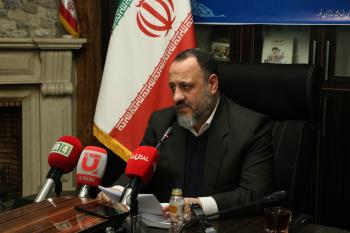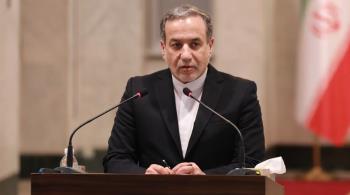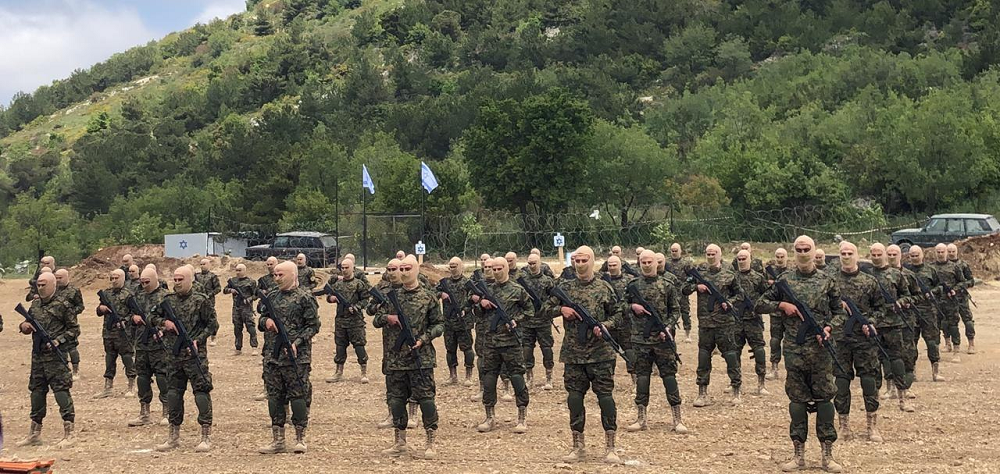Alwaght- While over the past months the Israeli Prime Minister Benjamin Netanyahu and other cabinet hardliners have been threatening to wage a war on the northern front, the Lebanese Hezbollah’s military strength takes from them the dare to realize their threats as they make evaluations about outcomes of a possible war.
Meanwhile, one of the less known power arms of Hezbollah about whose strength the Israeli media, analysts, and officials are talking these days is the elite Radwan Unit that is grabbing the calm from Tel Aviv leaders.
After recent tensions between the Israeli and Lebanese armies over a camp established in a border area, the Lebanese forced the Israelis out of the area with the army support. The important and worrisome point for the Israelis in this dispute was the involvement of Radwan forces. Hebrew-language media claimed that according to intelligence evaluations, Radwan forces had hands in what they called violation of the status quo in the Shabaa Fields, a Lebanese area occupied by the Israeli forces.
In recent months, Israeli authorities have repeatedly expressed concern about Hezbollah's missile and drone power, and after its recent military exercises on the eve of the anniversary of the liberation of southern Lebanon, Tel Aviv changed its view of the capabilities of this movement.
Reports suggest that in the military drills, forces from Radwan Units were present, and since the drills simulated crossing the border into the occupied territories and destroying vital Israeli infrastructure, Tel Aviv watched it closely and the Israelis called it a prelude to a planned attack on the occupied territories.
Radwan Unit is so nightmarish to the Israelis that the army chief Herzi Halevi in remarks aimed at assuring the citizens that Tel Aviv is not afraid of this force said that its power should not be overstated, but he implied to the top officials how powerful the unit is and they should forge tactics to confront it. He ordered the army forces to identify the strength and weakness of this force so that they can deal with it in the event of a future conflict. Following these instructions, senior commanders analyzed Hezbollah's recent war games and the capabilities of the Radwan Unit and its operational methods to get a picture of its military tactics.
Israeli experts suggest in their evaluations that the elite force fought in many Syria operations and honed their combat skills on the battlegrounds.
This Hezbollah unit also played an active role in liberating various parts of Syria from control of terrorist groups. When the Syrian war was ongoing, Tel Aviv officials said that they should keep the fire of war burning in this country so that Hezbollah forces do not return to Lebanon, as return of experienced combat forces to Lebanon was viewed as a serious threat to the northern front.
Radwan Unit’s power
Radwan Unit, also called elite force or Radwan Force, was founded after 2006 war by Imad Mughniyeh, the prominent Hezbollah military commander who was assassinated in Syria in 2008 by the Israeli regime.
Radwan Unit consists of a large number of 6 to 7-member groups that are capable of launching operations without dependence to or logistical support from the command center. Therefore, one of the main features of this force is the autonomy of its groups, and the central command has given this feature to them. Actually, they are allowed to make quick tactical decisions on the battleground, and in other words, they are a fire-on-your-will force, and this issue greatly helps their power of action.
The number of its fighters is estimated at 2,500, and these forces are in strict classifications and undergo strict training on sniper shooting, using anti-tank weapons and explosives, running long distances, hiking mountainous areas, moving in bad weather conditions, and conducting arrest operations.
The force has so far carried out many secret and sensitive operations, all concluded in highly quick and professional ways. These forces also have a lot of skill and experience in using motorcycles, tanks, armored personnel carriers and other combat vehicles, as well as a lot of expertise in parachuting.
Penetration of the occupied forces and capturing enemy forces is one of the tactics of this unit that was also exercised in recent drills. Principally, capture of Israeli soldiers is one of the worries of Tel Aviv officials in confrontation of resistance forces. Penetration operations allow the group to collect data on the positions of Israeli forces and time of response to any incident. Therefore, its expertise puts the enemy in a position of weakness.
The Israeli media published a report in 2021 and claimed that one of the missions of the unit is to carry out reconnaissance and intelligence operations against Israeli targets by drones, the purpose of which is to prepare for the implementation of threats and attacks on military positions and cities.
Posing a substantial challenge to the occupation, the unit captivates the attention of many Israeli analysts and experts, with them suggesting that Radwan Unit will be responsible for liberation of Al-Jalil (Galilee) region in northern occupied Palestine, something simulated in recent military exercises. In their analysts, the Israelis cite Hezbollah chief Sayyed Hassan Nasrallah who once revealed that Hezbollah has Radwan and Abbas Units whose forces are large in number and are equipped with large number of modern arms. They, he said, have great expertise in offensive operations and their capabilities have remarkably increased since the 2006 war.
Additionally, the unit consists of engineers who, apart from military expertise, are also skilled in cyber and information fields. In the past two years, the Israeli regime has shown that it has many weaknesses in the cyber space, and according to the Israelis themselves, several thousand cyber attacks have been carried out on sensitive and security centers in IsraEli regime, and during the war, security systems disrupted by Hezbollah forces will make the combat difficult for Tel Aviv.
The Israelis know well that this force poses a great challenge to them in the future, and that was one of the reasons for assassination of its founder in Syria, thinking that by doing so, they can hinder advances of this force. However, since the resistance forces are not individual-centered, the more time goes by, the more powerful this force grows.
Haytham Ali Tabatabai, the commander of Radwan Unit and a prominent figure of Hezbollah, poses a big threat also to the Americans in addition to the Israelis. The US State Department announced a reward up to $5 million for any information on him.
According to the American claims, Tabatabai is a top Hezbollah military commander, leading the movement’s elite forces in Syria and Yemen wars. Therefore, the presence of such a person in Hezbollah's elite unit is considered a great privilege and well demonstrates continuation of a path Mughniyeh laid years ago.
The Israelis also know well that any conflict with Hezbollah brings grave consequences for the occupied territories, and the resistance fighters tip the scales of power thanks to the advanced weapons they have. They have already perplexed the Israelis who lost the initiative on the northern front.
Given the confusion and fear the Israeli officials are living, Hezbollah’s elite force seems to have well established its presence in southern Lebanon in order to neutralize the Israeli army with rapid infiltration of the occupied territories in case of new Israeli adventure. The Israelis never forget this name, and perhaps in the coming months, Radwan Unit makes headlines on the Israeli media by raising resistance flag in Al-Jalil and other occupied territories.



























